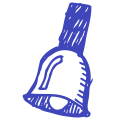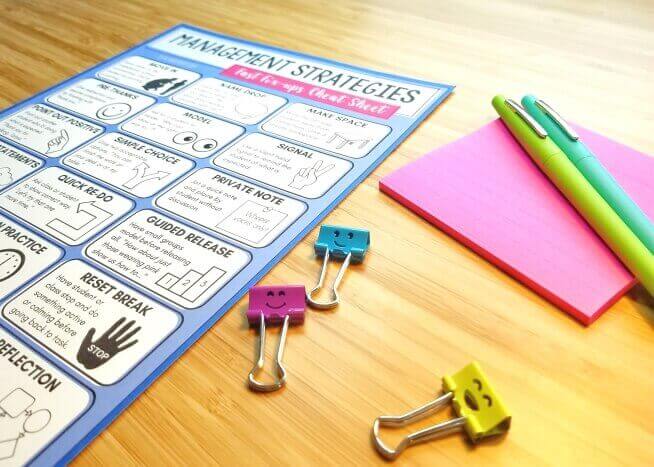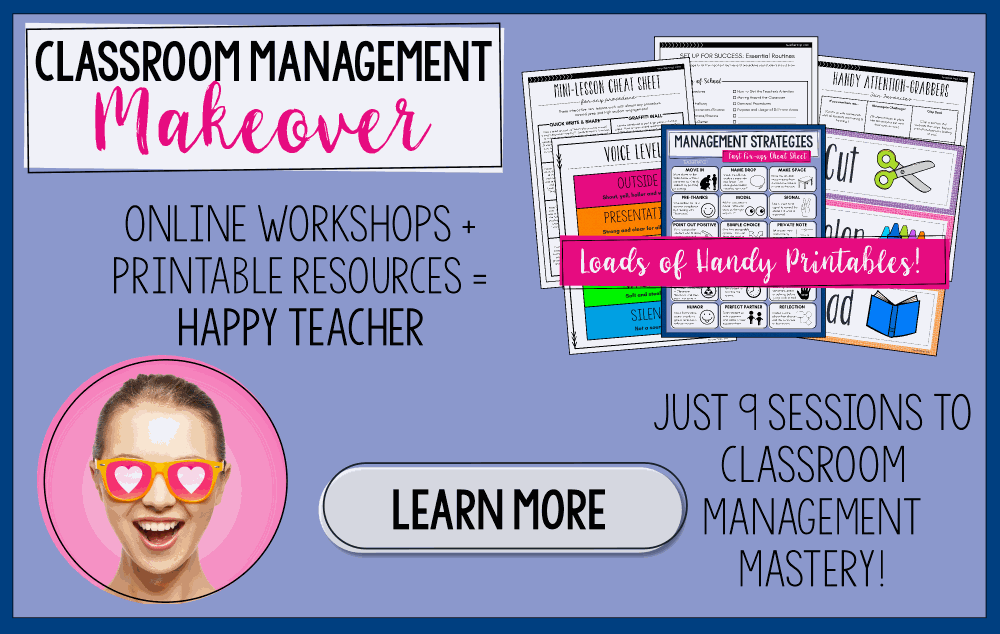The Clip Chart is a behavior management phenomenon that swept through classrooms across the country and eventually made it’s way IN, and very quickly OUT, of mine. I’d just had a particularly challenging year, and I was ready to try anything, so when a teammate suggested we try Behavior Clip Charts, I was all in.
I used the Clip Chart faithfully for a full semester, but then dropped it like a rock and never looked back! Here’s why, and here’s what happened next.

Why I Ditched the Clip Chart
1. Same Students, Same Outcomes
The first thing I noticed was that the SAME students continued to end the day on the SAME colors. Kids who were ‘Leading the Way’ kept leading the way, while kids who needed to ‘Make Better Choices’ kept needing to make better choices!
I quickly realized that the Clip Chart was great at telling kids how they were currently performing, but did little in terms of improving behavior.
2. Bribes and Threats Lost Their Power
During the first week of school, students came up with lists of rewards they wanted to earn if they stayed on ‘Ready to Learn’ or above all week. I also let them know what consequences they’d face.
In the beginning, the kids seemed highly motivated to earn the reward or avoid the punishment. But very quickly, it wasn’t enough. Some kids wanted bigger and better rewards, some kids lost interest in the rewards, and many kids didn’t seem to care about the potential consequences.
3. The Chart CAUSED Problems
I found that the chart became a trigger for many children in my class. While most lost interest fairly quickly, some became hyper-focused on the chart and where they fell each day. These kids would have complete melt-downs if they fell below and it would often ruin their entire day (even though I always offered the ability to move back up).
For some of my most serious behavior challenges, I had stop using the chart altogether. It caused far too much anxiety and generally led to more issues for me to manage.
4. It Wasn’t FAIR
I could never figure out how to use the chart fairly. For example, one of my students struggled with attention and impulse-control. For him, I considered a great day to be one where he didn’t hit anyone or break anything. We’d set specific goals together and he was showing improvements. But how does the chart work in that situation?
If I put his clip at “Ready to Learn” because he’s meeting his goals, other students feel like I’m letting him get away with all the other problematic behaviors he shows. If I put him at “Stop and Think” he gets upset because he’s trying so hard and DID meet his goals.
Even though I used student numbers instead of names, I always had issues with fairness. Why can this kid do this, but I can’t? Why does she get a reward and I don’t?
5. I Was SUPER SICK of Managing It
My final issue with the Clip Chart was that I HATED managing it. That chart was a constant interruption to our classroom activities and learning. Using the Clip Chart wasn’t leading to better behavior in kids AND it made life harder for ME. Lose-lose.
What Happened Next?
Over Winter Break, I made up my mind that the Clip Chart was going in the trash can. I wasn’t sure what would take it’s place, but I had a vision of what I’d like to see happen in my classroom.
I wanted a classroom management system that focused on:
*building classroom community
*developing problem-solving and social skills
*self-reflection and goal-setting
*individualized success
On our first day back from Winter Break, I wasn’t sure how things would go. I sat down with my class and we spent the first hour of the day mapping out our vision for our classroom.
The kids created a wish-list of how they’d like their class to be and we used it to create a shared set of agreements called our Classroom Promises.
What came next wasn’t a classroom management system at all.
It was simply a growing toolbox of strategies and routines that WORKED for kids. What today I call my 5 Pillars of Classroom Management was then just a series of trials and errors that helped me understand the ins and outs of creating the classroom of my dreams.
Classroom Management Makeover
The Classroom Management Makeover Course is my attempt to share what I learned with other teachers.
You DON’T NEED a classroom management system of rewards and consequences.
You can PREVENT 95% of behavior issues by setting up the right routines and using easy redirecting strategies.
Classroom management ISN’T about being the behavior police, obsessing over classroom rules, or bribing children to do what you want.
Empowerment, engagement, and classroom community are the HEART of a well-run classroom.
Still not sure if you can let go of your Clip Chart? Check out my latest blog post, 5 Alternatives to the Clip Chart. If you want to create a classroom where students make good choices for the right reasons, you’ll want to check it out!
















